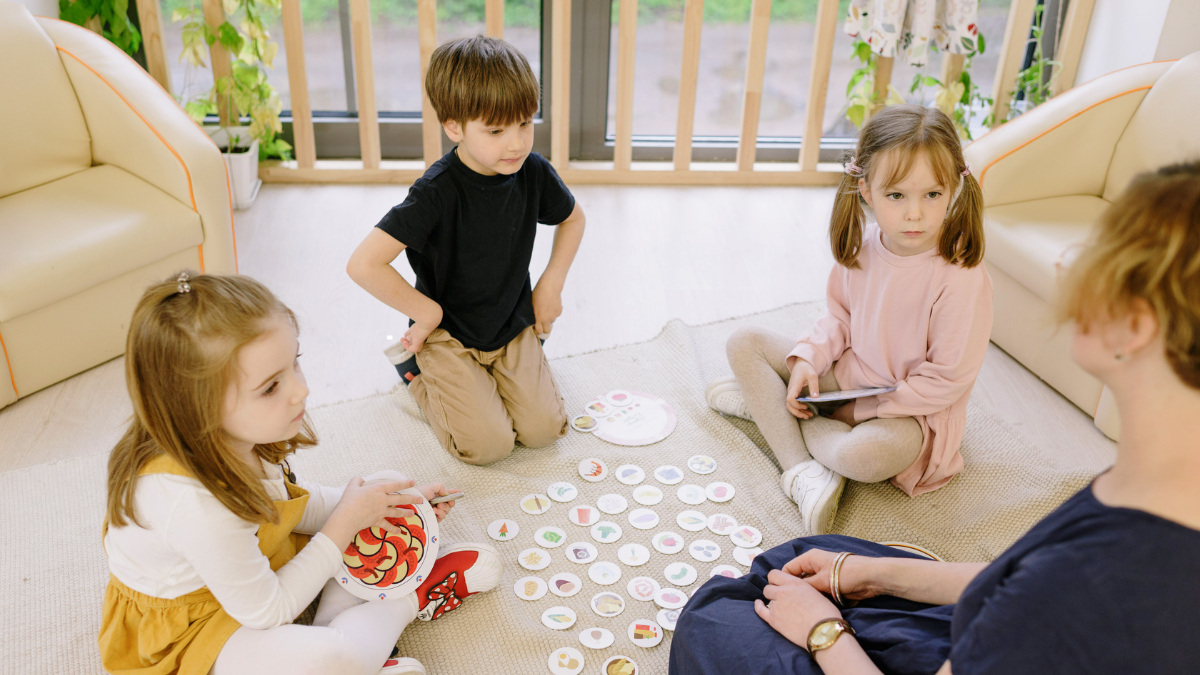Have you ever not understood the language you talk, when you are trying with your toddler to listen? One second, you calmly ask them to do something and boom, they are running in the other direction or simply ignore them. It is a sad story, especially by many parents. The good news though is there are means to pass through these sticky situations and make communication with a toddler a bit easier.
Toddlers are an age where they are perfecting how to exercise their independence, pushing limits, and more self-disclosure. Nonetheless, this stage of development usually implies that they do not necessarily react to common requests or orders. However, through some patience, steadiness and knowledge, you can enhance your toddler’s ability to listen and can help them bond better.
Now, let us explore a few effective methods which will assist you to communicate better with your toddler and teach him to listen.
1. Put yourself on the same level with them
Here is the scene: You command your toddler to clear his/her toys but he/she is looking in a different direction and he/she is taller than you are. Someone may forget that you could be a giant to them because of their little size. Actually getting on their level, literally by crouching, kneeling or sitting on the floor, can mean a world of difference to them. When you stare in the eyes, they can pay attention and feel related to you.
As an example, rather than being at the kitchen bench, peering down at your toddler, get on their level by kneeling and meet their eyes when providing an instruction. This will enable them to realize that you are addressing them and will also make them hear you more.
Related: How To Make Your Toddler Eat
2. Use Language that’s Basic-uncomplicated
By this age of development, the toddler is yet to fully grasp language and comprehension. The easier and easier the instructions you give them the more they will know and do. They can get perplexed by long strict explanations or asks. Rather you should divide your instructions into small doable steps.
By way of example, instead of saying, “Please clear up your toys and put them back into the basket and see that it is all put away tidily,” say something more in the nature of, “Can you put the toys in the basket?” This makes it easier to work through and to them.
Related: How to Make Your Kids Listen
3. Only give One Instruction at a time
Toddlers cannot maintain their attention long, and giving too many instructions may result in misunderstanding or paralyzed movement of any kind. With just one clear instruction, they are able to concentrate fully on the task at hand before shifting to the next one.
An example is that when you want your toddler dressed then say, Let us wear your shirt and after they have worn it then say, now we are wearing your pants. They will be much more likely to do it without feeling overpowered.
Related: How To Make Your Kids Happy
4. Call Upon Positive Reinforcement
Toddlers react well to positive reinforcement. Instead of corrective measures about what they are not doing, focus more on the affirmative build on what they are doing. Praise your child when he/she listens and obeys.
By way of example, say, “Great job with all the toys into the basket,” when your toddler is able to tidy the toys. “I could never thank you enough for assisting me clean up ever still!” This gives them confidence and stimulates them to do it again.
5. Establish Hard and Fast boundaries
In the case of toddlers, being consistent is the most important thing. Saying yes one day and no next day, letting them do something you have said no to, can leave your toddler confused and find it more difficult to listen. Clarity and consistency of boundaries will show your toddler what is expected and, in a longer run, learn to listen and obey the instructions better.
As an example, when you do not want the TV remote to be touched by your toddler, simply and authoritatively say, “No, the remote will lie on the table.” Whenever they move near the remote, say the same thing. The limits will be learnt by consistency.
6. Bake It Fun
Toddlers adore games and using daily routines to get their attention by transforming them into games will greatly increase their propensity to listen. Adding music, humor or imagination to your requests can make them feel less as though they are being bossed around and being more involved.
As an example, if you were to say, simply, “Please clean up your toys,” make it a game and state, “Who can gather their toys away the quickest?” Or even sing a catchy song involving cleaning up to make the cleaning process fun to them.
7. Offer Choices
Toddlers seek independence and at times, they defy the idea of being controlled purely because they do not feel in control. Presenting them with some choices makes them feel powerful and yet move toward what we want them to do. This is important because you should not choose the options to be more than two or three as they will feel overwhelmed.
As an example, when it is time to wear their shoes, rather than saying, “Put your shoes on,” you can say, “Do you want to wear the red shoes or the blue shoes today?” This allows them to feel in charge and still do what you require.
8. Be Positive and Keep Calm
Toddlers are very sensitive to tone and to body language. Clatspeech contains other people, and therefore they will reflect whatever frustrates you or upsets you. Rather, maintain a relaxed tone in a positive way to invoke collaboration. Adopting a warm tone may make your toddler feel secure and more open to listen to you.
As an example, instead of exclaiming, “Why didn’t you hear me like that?” in anger, employ, “I want you to clean up your toys, and next time we will do that together. So, let’s expand!!” The positive attitude and demeanor you take towards them will improve their receptiveness.
9. Have Visual Signals
Toddlers tend to be visual as opposed to verbal and employing visual sources can assist them in comprehending anticipations. An example or a motion could enable them to understand what they are supposed to accomplish easier.
As an example, draw a simple visual calendar or schedule that has an image of simple chores such as brushing teeth, putting on shoes and eating dinner. This offers them a visual representation of what should be done and at which time.
10. Listen patiently & With compassion
Toddlers are at the stage of studying how to get control over their feelings and learn to express them. They might occasionally just be too tired, hungry or overstimulated to listen, and that is fine. One should be patient and empathetic when trying these moments. Learn to recognize that your toddler does not always have the capacity to understand why he or she is not listening, but acting out their physiological needs is a common way in which they display their reality.
As an example, when your toddler does not want to wear his jacket, you might stop yourself and calmly breathe in and out and attempt to understand what could be happening. Are they over-heated? Do they feel bad about some other thing? Just a little empathy is enough to neutralize the situation.
11. Form Routine and Predictability
Children live on routine. They listen better when they know what to expect which makes them feel more secure. Creating a pattern that involves activities such as mealtime, playtime, and bedtime can make the toddlers aware of how they need to act, and when they know what to do and when, they will be better inclined to conform.
A good example is having a daily bedtime routine (bath, story, cuddle, sleep), in this case, your toddler would be used to expect what is happening next most likely, he/she would be cooperative to a routine without protesting.
12. Allow Them to Simmer down
It can be easily overlooked that toddlers are yet learning to quickly process information. There are times that when you command them to do something, they need time to digest what you told them and determine how they can go about it. Wait a bit before having to repeat yourself and do not think that they are not listening especially when they are not prompt in responding.
As an example, once you remind your toddler to wear the shoes, wait before reminding him to wear the shoes. This provides them with the opportunity of digesting the instruction as opposed to being stressed or forced.
Conclusion
Raising a toddler is not an easy task and as a parent you may face a lot of difficulties, however, a combination of patience, consistency and these helpful techniques will make your toddler a better listener.
You will feel closer to your toddler and develop a more harmonious relationship with each other, by just using a few adjustments in your behavior, in the way you communicate and interact with your child. No one trick fits all and all toddlers are not the same, so don’t be uptight and unwilling to experiment, bend to find what suits best your family.
Save the pin for later




